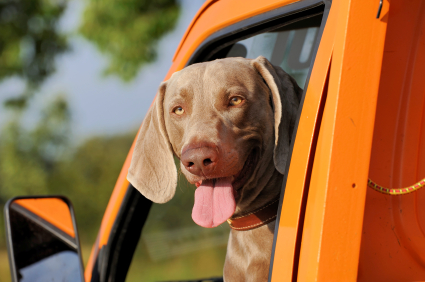It’s Hot Out – Learn How to Protect Your Pet From Heatstroke
 Every summer, pets all over the country visit the veterinarian on an emergency basis for heat exhaustion. Many die or experience severe consequences related to over-heating. This problem, while scary, is totally preventable with a little bit of knowledge. Know what you can do to prevent heat stroke and what you should do if you ever find yourself with a pet that has become overheated.
Every summer, pets all over the country visit the veterinarian on an emergency basis for heat exhaustion. Many die or experience severe consequences related to over-heating. This problem, while scary, is totally preventable with a little bit of knowledge. Know what you can do to prevent heat stroke and what you should do if you ever find yourself with a pet that has become overheated.
Basic Heatstroke Prevention Steps
Even the healthiest of dogs can suffer heat-related problems. Use a little common sense and keep your pet indoors during the hottest part of the day. You may need to reduce the length and intensity of outdoor exercise. Never, ever, ever leave your pet in a car on a hot day, even for a short period. You should use extra precautions in pets that have short noses (think Pugs, Boxers, and Shih Tzus), very old or young dogs, dogs that have chronic health issues, those not used to hot weather, and any dog that is left outside for any length of time. Always provide fresh, cool water and be sure that your dog has an escape from the sun
Signs of Heatstroke
Dogs start with a higher body temperature and aren’t able to cool themselves as efficiently as we are. They rely on panting as well as sweat glands on the paws to exchange heat. It’s not terribly effective. In a very short period, a dog’s temperature can rise significantly enough to cause damage to the brain, kidneys, and gastrointestinal system.
Symptoms of overheating include heavy panting, vomiting and/or diarrhea, reddened tongue and gums, weakness, elevated heart rate, drooling, and eventual unconsciousness. A rectal temperature of greater than 104 F is cause for concern.
Steps for Dealing With Heatstroke
If you think that your dog may be exhibiting signs of heatstroke, move him or her to a cool area immediately. Offer small drinks of water if your pet is able to drink and call your veterinarian. If your dog is unconscious, unable to stand, or not responsive, call your veterinarian immediately to let them know that you are coming in. Begin cooling the animal by applying cool water to your pet’s body on the way to the vet. It is important that the pet is treated as soon as possible.


